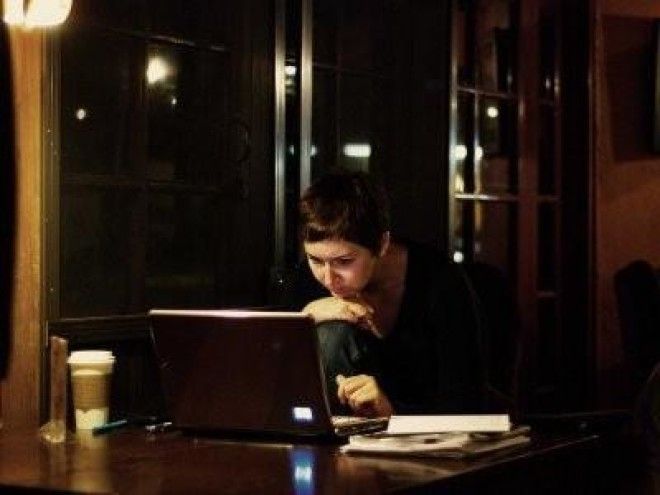"People seem to have this idea that having a full-time job leaves no space for many other things, but clearly that's not true," she tells Business Insider. "It is quite possible to have a more than full-time job and have a very full personal life, too. It's just a matter of where that time goes."
In her recent book, "I Know How She Does It," Vanderkam details the results of her Mosaic Project: a time diary study of 1,001 days in the lives of women who make at least $100,000 a year and still have time for family and friends.
So how do these women do it all? From Vanderkam's study of the time logs, we've highlighted 13 ways successful women make the most of their time.
They plan their toughest tasks for early in the morning

The quiet hours of the morning can be the ideal time to focus on a top-priority work project without being interrupted or distracted. Vanderkam cites a study conducted by Johnson & Johnson that found that our energy levels peak around 8 a.m. "When you show up at work with your coffee, it is game time. You're pumped and ready to go," she writes. "By 3 p.m. or so, most people's energy levels are flagging. If you aim to tackle a vexing item then, you'll get distracted, and take twice as long as you would have at 8 a.m." Take advantage of the early morning surge to knock out intense or deep-thinking work.
They work "split shifts"

The traditional 9 to 5 arrangement doesn't work for everyone. Vanderkam says many successful women work in "split shifts," meaning they work some during the day and some during the night. "It's the same number of hours, it's just worked in two chunks instead of one," she explains.
"Rather than work these hours straight through, a woman might leave work at a reasonable hour during the week," she says. "The exact hour varies; it could be 4:30 or it could be 6:30. The point is that it's early enough to give you the evening for family or personal pursuits.
Then, at least one weeknight per week, you go back to work after the kids go to bed."
They work remotely

Working remotely is not critical to success, but it can be a good option. "Remote work need not be the either/or. You do not need to only work from home or only work from the office," Vanderkam points out. She found that several of the Mosaic Project women worked from home one to two days a week. Not only does it allow for more family and personal time, and eliminate that day's commute, it can also be productive to get out of the office — which oftentimes is distracting — and hunker down at home.
Vanderkam prefers Wednesdays as her work-from-home day. "It breaks up the week well, and if you do have a brutal commute, you won't have to endure it more than two days in a row."
They think 168 hours, not 24

Avoid "The 24-Hour Trap," Vanderkam warns. "When it comes to time, we often think that 'balance' requires fitting all of our priorities into 24 hours," she writes. "In particular, we want to fit those priorities into each of the 24 hours that constitute Monday, Tuesday, Wednesday, and Thursday. We act like these are the only four days that count."
Instead, look at the whole picture: There are 168 hours in a week. That means if you're working 40 hours a week and sleeping an average of eight hours a night, you still have 72 hours for other things.
She found that many of the Mosaic Project participants chose to work late in the office a few nights — until 10 or 11 p.m. — but would come home at 5 p.m. on other days, allowing for quality family and personal time. "Any given 24 hours might not be balanced, but the 168-hour week as a whole can be."
They take real breaks

"When you don't take real breaks, you take fake ones," Vanderkam says. The fake ones include scrolling through Facebook or checking your stocks or responding to emails.
"We get lost in transition. And that's a shame because breaks are a great opportunity to nurture yourself and to shape work culture," she writes. "You have to build unclaimed time into your life. A too-busy schedule precludes new opportunities."
It's not easy to "build in slack," but sometimes you have to put your foot down. One of Vanderkam's tricks is using a small weekly paper calendar. "It provides a visual signal that a day is getting too full. When I find myself scribbling items in the margins, that's a sign I need to look for time on a different day," she writes.
They plan ahead

"Time management is like chess. The masters always think a few moves ahead," Vanderkam writes.
The most successful people spend 10 to 15 minutes each day after work thinking about the next day. "Plot out what you're going to do when you get to work," suggests Vanderkam.
"That way you can capture that first burst of energy when you show up at work and use it to tackle something important."
Additionally, successful women will allow time to plan for the upcoming week. "People don't take advantage of Monday in the way that they could, partly because we don't think about Monday until we're in it," she says. The best time to do this is Friday afternoon or Sunday evening. Friday afternoon is not the most productive of times as is, so repurpose it as planning time. Or try Sunday night, when you're already in workweek mode.
They make time for exercise

Exercise does not have to be a casualty upon entering the working world, but it does require planning and a bit of creativity. Most of the Mosaic Project women engaged in "functional fitness." They would actively commute to work, use family activities such as going to the zoo to get extra steps in, or go for a walk with colleagues rather than scheduling a formal meeting.
If functional fitness isn't an option, try finishing your workout first thing in the morning, as we tend to have the most willpower then and we're less likely to be interrupted by a meeting or client call.
One of the Mosaic Project women used her lunch break to work out and loved it. "Immediately, I started sleeping better," she told Vanderkam. "I had been an insomniac before, and couldn't shut my brain down at night. Even though I took time away from work, I had much greater mental clarity in the afternoons after I exercised, and was able to accomplish more in less time."
They don't go to every networking event, but are "strategically seen"

It can be easy to skip out on networking events or post-work happy hours to make more time for family and friends, but "being seen" is
important for your career.
"It's not just about the higher-ups seeing you so that you are at the front of their minds," Vanderkam writes. "Even after you reach management levels, teams can interpret efficient, no-nonsense interaction as coldness if it's not tempered with the occasional relaxed get-together."
You don't have to go to every conference or dinner, but when you do make time for the occasional event, make the most of it. This means
going in with a goal, knowing exactly who will be there and who you want to talk to, and spending time introducing yourself to others, rather than just listening to the speaker and taking off immediately afterwards.
They don't watch much TV

The Mosaic Project women averaged 4.4 hours of television watching per week, several hours less than the average employed mothers.
Plus, contrary to popular belief, television doesn't bring us that much happiness. "TV is fun, but it's notthat fun. Scales of human enjoyment place it somewhere in the middle," Vanderkam writes.
Try turning the TV off a half hour earlier than you normally would and use that time to read, write a letter, or watch a TED talk.
They skip out on a lot of meetings and opt for one-on-one time

"Meetings are often a bad institutional habit," Vanderkam writes. They chop up your day, take time away from deep work, and often are longer than they need to be. Productive people find extra hours during their days by simply recognizing meetings that they don't need to attend and cutting them from their schedules.
If you can't cut it, shorten it. Two 60-minute meetings cut down to 45-minute meetings means an extra 30 minutes in your day. Oftentimes, one-on-one time can be more productive than the traditional team get together, says Vanderkam. Many of the Mosaic Project women made time for coffee or lunch meetings and found them to be much more productive than formal meetings.
They multitask — the right way

Multitasking is often inefficient and does not boost productivity or happiness.
Successful women know how to multitask effectively. "The best categories for multitasking are things that use different parts of your brain," explains Vanderkam. "A few studies have found that doodling actually helps you pay attention and retain more information in meetings as it absorbs that slight bit of extra capacity that can lead your mind to wander."
Examples of effective multitasking are calling a family member or friend while folding laundry or ironing. Functional fitness is also productive multitasking; walking your kids to the park means quality family time and exercise.
They take advantage of unexpected moments

Using unexpected time distinguishes the productivity masters from the novices.
"Anyone can plan something fun or meaningful for an open block on the calendar," says Vanderkam. "The best stewards of house can pivot in the moment. To these mosaic makers, a broken tile is an opportunity, and not a source of angst."
It's always good to have ideas on hand for extra time that might appear throughout your day if a meeting finishes early or a trip gets canceled. One of the Mosaic Project women uses her unexpected time to indulge in a massage. She's become a regular at one place, where they know her by name and will squeeze her in for an appointment within 30 minutes on any given day.
They know how long things take

Being able to estimate accurately how much time things will take is one of those things that separates the average person from the super-successful person, Vanderkam says.
"There are many things we do daily, and yet we seem to have no idea how long they actually take, and because of that we're surprised at
what doesn't fit into a day," she says.
She suggests trying the time diary exercise that the Mosaic Project women did, where you log each hour of each day and are forced to pay attention to where your time goes. "Try it for a week. It's an eye opening experience."

